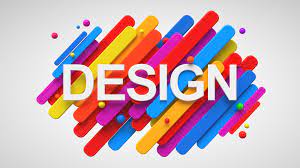The Power of Design
Design is all around us, shaping the world we live in and influencing our perceptions and experiences. From the products we use to the spaces we inhabit, design plays a crucial role in enhancing functionality, aesthetics, and usability.
Good design is not just about making things look visually appealing; it’s about solving problems and improving the way we interact with the world. Whether it’s creating a user-friendly website, designing a comfortable chair, or crafting an engaging logo, design has the power to communicate ideas, evoke emotions, and drive action.
Design thinking is a process that involves empathy, creativity, and rationality to develop innovative solutions. By understanding the needs and desires of users, designers can create products and experiences that resonate with people on a deeper level.
One of the key principles of design is simplicity. By stripping away unnecessary elements and focusing on clarity and functionality, designers can create elegant solutions that are easy to use and understand. Good design should be intuitive, efficient, and user-centered.
Design is also closely linked to technology and innovation. As new tools and techniques emerge, designers have more opportunities to push boundaries and explore new possibilities. Whether it’s experimenting with virtual reality or incorporating sustainable materials into their work, designers are constantly evolving to meet the demands of a changing world.
In conclusion, design is a powerful force that shapes our lives in profound ways. By harnessing the principles of good design – creativity, empathy, simplicity – we can create meaningful solutions that enhance our experiences and improve our quality of life.
5 Essential Design Tips for Clarity and User Engagement
- Keep it simple and uncluttered.
- Use a consistent color palette and typography.
- Ensure good contrast for readability.
- Incorporate whitespace to create balance and focus.
- Consider the user experience in your design decisions.
Keep it simple and uncluttered.
When it comes to design, a key tip to remember is to keep it simple and uncluttered. By focusing on essential elements and avoiding unnecessary complexity, designers can create clean, elegant solutions that are easy to understand and use. Simplifying design not only enhances visual appeal but also improves functionality and user experience. Embracing simplicity allows for clear communication of ideas and ensures that the design remains effective and impactful.
Use a consistent color palette and typography.
Using a consistent color palette and typography is essential in creating a cohesive and visually appealing design. By selecting a harmonious set of colors and fonts, designers can establish a strong visual identity that resonates with their audience. Consistency in color and typography helps create a sense of unity across different elements of a design, making it easier for viewers to navigate and understand the content. This attention to detail not only enhances the overall aesthetics but also reinforces brand recognition and communicates professionalism.
Ensure good contrast for readability.
Ensuring good contrast is essential in design to enhance readability and make content easily accessible to the audience. By utilizing contrasting colors, fonts, or elements effectively, designers can create visual hierarchy and improve the legibility of text, making it stand out and be more engaging to readers. Good contrast not only enhances the aesthetic appeal of a design but also plays a crucial role in guiding the viewer’s attention and conveying information clearly and effectively.
Incorporate whitespace to create balance and focus.
Incorporating whitespace in design is a crucial technique that helps create balance and focus within a layout. By strategically utilizing empty space around elements, designers can enhance visual clarity, draw attention to key elements, and improve overall readability. Whitespace allows for a sense of breathing room, preventing overcrowding and promoting a sense of elegance and sophistication in the design. When used effectively, whitespace not only improves the aesthetics of a design but also guides the viewer’s eye to important information, ultimately enhancing the user experience.
Consider the user experience in your design decisions.
When making design decisions, it is crucial to consider the user experience as a top priority. By putting yourself in the shoes of the end user and understanding their needs, preferences, and behaviors, you can create designs that are intuitive, user-friendly, and engaging. Taking into account the user experience ensures that your design decisions are not only visually appealing but also functional and effective in meeting the goals of your audience.


Leave a Reply